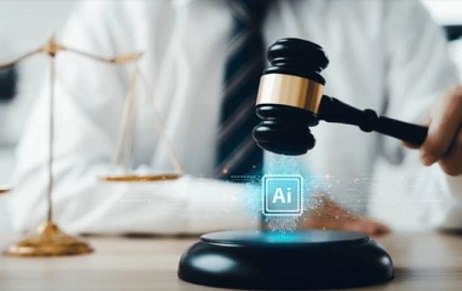Any successful café, restaurant, or retail establishment's environment is greatly influenced by its music. It…
Copyright Societies And The Copyright (Amendment) Act, 2012
Introduction
Copyright Societies are formed to collectively administer the work in order to protect its copyright, these societies are formed and managed by authors and owners of such works. It is not practically possible for every author or owners to keep a track of all the uses of their work. When a person becomes a member of national copyright society, his work is being kept under better vigilance and track of all the uses of his work are kept strictly because of the powers and facilities granted to copyright societies, also, collection of all the royalties for the usage of the work becomes easier. Moreover, our country being a member of the international conventions, the Indian copyright societies have a chance to collaborate with foreign societies and this facilitates the collection of royalties in those countries for usage of the work as well. It is therefore, in the interest of copyright owners to join copyright societies to get maximum economic benefit of their works.
Copyright Societies in India
In India a copyright society is registered under Section 33 of the Copyright Act, 1957. Such societies are formed by authors and owners and only one society can be registered to do business in respect of the same class of works. Formation of a copyright society requires minimum of seven members.
The business of providing licence for any dramatic, artistic, musical or literary work incorporated in cinematic or sound recording form should be carried out only through a copyright society duly registered under this act. The period for registration granted to a copyright society is five years and it can be renewed bore expiry of this period or at the end of it.
Effect of Copyright (Amendment) Act, 2012 on Copyright Societies
The Copyright (Amendment) Act, 2012 (2012 Amendment) came into force with the primary objective of establishing an equitable and just framework for administration of copyright and sharing of revenue to protect the rights of owners and authors incorporated in cinematography and audio recordings.
The amendment of 2012 added to the burden with respect to “issuing or granting licence” in respect to the above mentioned works. Previously, the Copyright (Amendment) Act, 1994 added Section 33 to the Act which made it mandatory that only copyright societies can grant licence or issue copyright licence. As a part of the 2012 Amendment, section 33(3A) was added, which laid down a new guideline that any copyright society carrying out the business of granting or issuing copyright licence must register itself again within the period of 12 months from the date of the amendment. Therefore, any copyright society which existed prior to the amendment has to re-register itself within the given time frame. Also, there was no punishment prescribed in case any copyright society fails to do so.
Problems with the Amendments in 2012 and 1994
There are always 2 sides of every coin. Though the attempt of government in the amendments was genuine, there are certain ambiguities that jeopardise the interest of non-author owners of a copyright in case of creative works. Section 33 which was inserted by the 1994 Amendment mandated only the copyright societies to carry in the business of “issuing or granting licence” for creative works. But, it does not say anything about the copyrightable work. Also, it has to be taken into consideration that Section 18 of the Act says that the owner of creative work can assign the copyright to any “person”.
Therefore, an owner or author has the right to assign his copyright to a production company and also has the right to assign it to any other person at the same time. So, in such a process, forming a copyright society is not necessary. However, a specific bar is created by Section 33 on any other person or entity who may be assigned any such right as stated in Section 18 to issue these licence as a copyright author or owner of a copyrightable work. The ambiguity is that only a copyright society has the right to get involved in business of issue of licence by virtue of Section 33, even when under Section 30 the copyright owner has the valid right licence a work. Section 30 and 18 are provisions of the act since it came into existence. The impact on these sections by Section 33 which was added later has not been clarified either by the statue or any of the amendments. It is still ambiguous as to whether Section 18 and 30 will prevail over Section 33 or not, this ultimately leads to high legal ambiguity while deciding the matters by the courts.
It is a mandatory for the production companies in the music and film industries to engage third parties for collecting and licencing and for collecting public performance licences as well for collection of fees in that respect. Alternatively, there is an option to assign, in terms of Section 18, public performance rights to third-party collecting and licencing bodies who can monitor such right so as to ensure that no infringement of any copyright is done by the non-owners. The third party due to their specialization in such activities make sure that no infringement in any form is done in country like India with such a massive population.
A fine example of such a scenario is the case of Novex Communication (P) Ltd., a company, which as per its website, in terms of Section 30, is holding authorization as agents or is assigned with rights under Section 18 for administration of copyright and licencing purposes.
There is a presence of legal vacuum upon the interests of the third party licencing entities carrying out the work of issuing and granting licence in respect of creative works. The 2012 Amendment might have clarified the position with regard to the same but it has only added up to the ambiguity by providing a new sub-section (1) of Section 33. Now, according to this section, only a copyright society can carry out the work of business of granting licence for issuing or granting of any copyright with respect to any dramatic, artistic, literary musical or artistic work incorporated in a film or sound recording. This proviso leaves bodies like Novex on an uncertain footing legally.
Conclusion
Copyright societies which are formed for a specific purpose of granting/issuing licences for usage of any artistic work are being put up at a more ambiguous position after the 2012 amendment. This ambiguity has not being resolved by any judicial pronouncement till date. There are few judgement by some High Courts on the said issue but they too are contradictory and indecisive. Given the developing stage of the copyright laws in India, there are high chances that the subsequent licencing disputed will allow High Courts and even Supreme Court to interpret the law and lay down proper position in order to avoid any form of ambiguity.
Author: Mr. Akash Gupta, Intern at Khurana & Khurana, Advocates and IP Attorneys. In case of any queries please contact/write back to us at pratistha@khuranaandkhurana.com.



